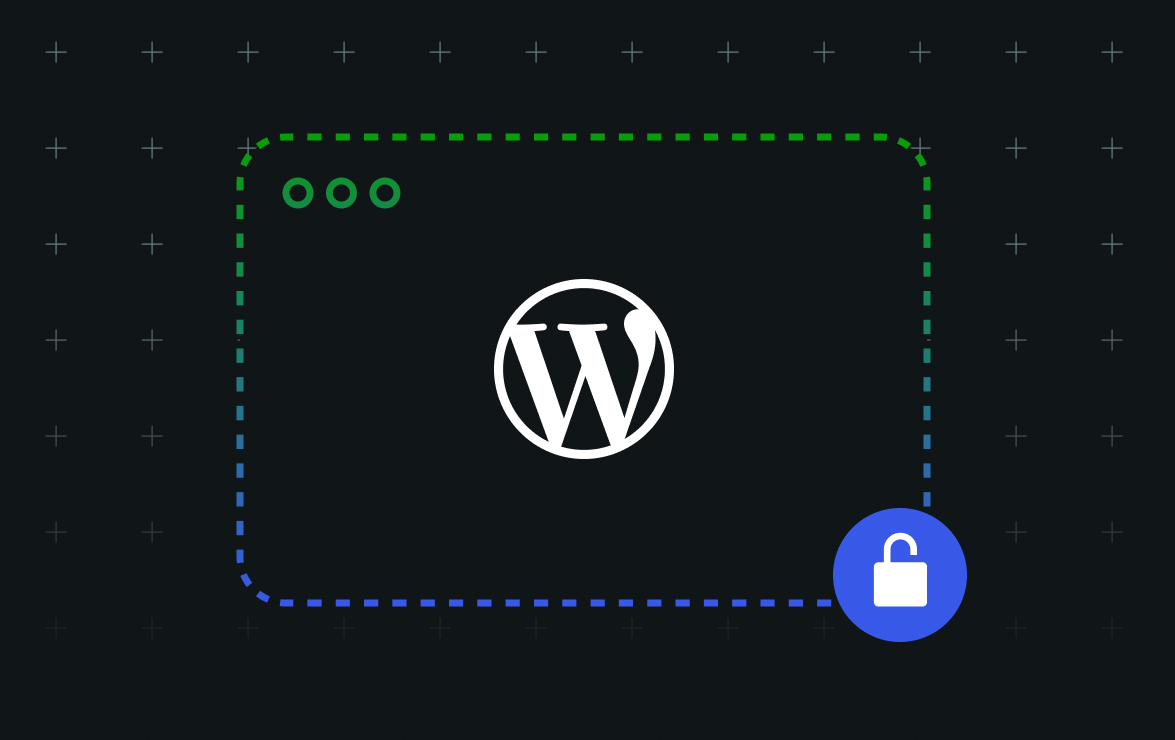Now Reading: How Does Open Source Make WordPress Different (And Better)?
-
01
How Does Open Source Make WordPress Different (And Better)?
How Does Open Source Make WordPress Different (And Better)?

WordPress’s open-source nature gives you true ownership and flexibility for your website. Unlike proprietary site builders, it allows you full control over every aspect of your site — from hosting and design to performance and functionality.
This matters because your website is a long-term asset. The platform you choose establishes the foundation for everything you do with it, now and in the future.
To help you make the right choice, in this guide, I’ll break down what “open source” means and why it sets WordPress apart from other site builders.
What does “open source” actually mean?
Open source refers to software (like WordPress) whose source code is open for anyone to view, use, and change.
It’s built under licenses that encourage people to contribute, share ideas, fix bugs, and make improvements together — so the tools they build can be publicly available, most often for free.
For example, WordPress uses the GNU General Public License (GPL), which allows anyone to freely use, modify, and share the software under the same open terms:
This is very different from closed-source or commercial software, where the code is private and only the company that owns it can make changes.
Other main distinctions include:
- Ownership and control: Open-source projects are often built and maintained by communities of volunteers. Closed-source products belong to one company.
- Cost and use: Most open-source tools are free to use and customize, while closed-source tools usually cost money and come with restrictions on what you can do with them.
Open source has been quite the success story, with some big names falling under its umbrella:
- Android holds over 70% of the mobile OS market
- Linux powers 63.1% of servers and 100% of all supercomputers
- PHP is found on over 73% of all websites
- VLC Media Player recently crossed six billion downloads
Why WordPress defines open source success
WordPress is the most widely used open-source CMS in the world — powering over 43% of all websites (along with other impressive statistics).
This dominance highlights just how far open-source platforms have come in comparison to proprietary site builders:

Long story short: WordPress gives users full freedom to modify, host, and distribute their sites however they choose.
This open model is what makes the platform fundamentally different from proprietary site builders.
Instead of locking users into one ecosystem, it lets them own and control their entire web presence. That distinction becomes even clearer when you look at it in more detail.
Open-source platforms vs. proprietary site builders
With an open‑source solution like WordPress, you’re in control of your website’s code, content, and future. You can fully choose how you set up and manage your site.
Here’s a quick overview:
| Key factors | Open source platforms like WordPress | Typical proprietary website builders |
|---|---|---|
| Cost | Free core software, with flexible costs for hosting, domains, and optional paid features. | Subscription-based monthly/annual plans. |
| Ownership | Full ownership — you can choose a hosting provider, as well as export and migrate your site any way you want, including when you build it on WordPress.com. | Limited control — exporting or migrating is restricted, complicated, or impossible. |
| Design | Thousands of free and paid themes; full code access to make custom changes. | Drag-and-drop editors with templates; design freedom varies, and some features may require more expensive tiers. |
| Features | Extendable through thousands of free and paid plugins as well as custom code. | Ecosystems are closed; integrations and features are limited to approved app stores or internal tools. |
| Performance | Depends on your hosting environment and setup, but it’s fully customizable through caching, CDNs, server configurations, and other optimizations. | Automatically optimized, but with limited tuning options. |
| Security | Determined by the security features of your hosting provider and site setup, fully modifiable. | The platform manages most security, and users rely on the vendor’s protection. |
| Scalability | Can support everything from small blogs to enterprise sites (e.g., major media sites). | Good for personal/business sites; less suited for massive global-scale websites. |
| Developer features | Full access to source code, custom themes/plugins, and database control (Business or higher on WordPress.com). | Limited or no access to underlying code; customization restricted to platform tools and APIs. |
| Support | WordPress.com provides 24/7 support, and there are thousands of community-based options like forums, tutorials, and freelancers. | Centralized customer support from the platform. |
| Developer ecosystem | Huge global community of theme and plugin developers, agencies, and freelancers. | Smaller, proprietary developer ecosystems. |
Why choose open source for your website? A deeper dive
Choosing WordPress and open source lets you build any kind of website you want — and truly make it your own, all at a great price point.
It means your site will run on a system that’s secure, proven, and well-maintained, with a great support infrastructure, and no ecosystem lock-in.
Let’s look at some of these benefits in detail.
1. Full website ownership
WordPress allows you to own every part of your website.
That includes its files, content, and all other data. You can download, back up, or migrate your site at any time.

You can even run it locally using WordPress Studio, which creates a virtual server environment on your computer — perfect for practicing your skills and testing new ideas safely.
With a website built on a proprietary platform, you don’t have these freedoms. Access to files is usually limited or non-existent, your site is bound to the vendor, and they make it hard to move off their platform. If you want to take your website elsewhere, you often have to rebuild it and copy content over by hand.
This is not the case with WordPress. You always have the option to move your site, just the way it is, with the same design, features, and content.
That includes websites hosted on WordPress.com. You can export your content or entire website as well as import content from another site or migrate your self-hosted site to WordPress.com. In fact, WordPress.com will do the migration for you — for free!
2. Customization options: themes, plugins, and more
WordPress gives you full creative control and offers the tools, parts, and flexibility to build anything you might need, from a small business site or a food blog to a personal or enterprise site.
First, choose from thousands of free and premium themes designed for multiple purposes — from blogs and portfolios to stores and business sites.
They let you change your entire site design with just a few clicks.

From here, you can customize your site in any way you want and adapt site-wide settings like colors and fonts directly in the drag-and-drop block editor.
Patterns — reusable design elements — help you put together entire layouts quickly.

Then, extend your site’s functionality even further with plugins to add features for SEO, eCommerce, contact forms, analytics, and more (check out the most popular plugins on WordPress.com).

Finally, developers and advanced users can also use custom code or connect external services and APIs (with no limits on the Business plan and higher on WordPress.com).
Tip: WordPress.com users can also generate and customize their websites using simple text prompts with our AI website builder:

In short, unlike closed platforms, WordPress doesn’t lock you into a fixed design or feature set.
You have the freedom to integrate, expand, and grow your website exactly how you want.
3. Platform maturity and security
WordPress is powered by a global community of developers, researchers, and companies who keep the software secure and up to date.
WordPress.com is part of that community — and through its parent company, Automattic, it provides the largest share of core contributors.

The community maintains a predictable update cycle that regularly introduces new features, security improvements, and performance upgrades to WordPress.
The upcoming WordPress 6.9 release is a great example. Check out the video below for more information:
The result: a secure, well-tested platform that’s proven itself across thousands of different environments.
Besides, the sheer number of people contributing to WordPress — and the platform’s open, public codebase — means vulnerabilities and other issues are quickly spotted and fixed.
Its decentralized structure empowers anyone to contribute improvements, rather than relying on a single central entity to do so.
Yet while the core software is mature and secure, overall site safety also depends on following best practices and using a reliable hosting environment. That’s why WordPress.com includes automatic updates, backups, SSL certificates, and DDoS protection with every plan. The Business and Commerce plans also include Jetpack’s built-in spam filtering, activity logs, and downtime monitoring.
4. Community support and shared knowledge
Support and learning are where WordPress’s open-source roots really shine.
The sheer size of its community means you’ll find endless tutorials and advice for every skill level.
On WordPress.com alone, support options include detailed guides, courses, support forums, and expert help via live chat.

As a WordPress user, you’ll find that nearly every problem you might face has already been solved — and documented — by someone in the community.
You’ll never be without help, and you’re never locked into a single vendor or support channel.
Tip: Another highlight is in-person meetings like WordCamps, where you can connect with other WordPress users, listen to informative presentations, and learn from each other.
6. Growth and innovation
Because WordPress is open source and powered by a global community, it keeps improving and growing faster than most commercial platforms ever could.
Developers constantly build improvements, extensions, and tools that make the software more useful and user-friendly.
One of the best examples of this is the thousands of themes and plugins created by the community.
Some of these extensions become so successful that they eventually become default features of WordPress itself — like the Block Editor, WordPress REST API, and auto-embeds.
Besides, WordPress has multiple tools that make life easier for the developers themselves.
For example, WordPress Studio is a free, open‑source app from WordPress.com. It lets you spin up local WordPress sites, sync changes with the live site, and share preview links with clients.

Another great example is Telex — an experimental AI tool from Automattic that lets you describe your idea in plain language and generates a fully functional WordPress block you can install on your site.

Why choose WordPress.com to host open‑source WordPress?
WordPress.com gives you a managed WordPress experience — everything is set up, optimized, and maintained for you.
You don’t have to handle installation, hosting, security, performance, or software updates. WordPress.com takes care of it automatically, so your site runs reliably without extra effort.
Protection and performance features you get include:
- Servers specifically optimized for WordPress
- Automatic backups and malware scanning
- Free SSL certificates and spam protection
- A web application firewall (WAF) and DDoS protection
- Real-time backups, one-click restore, and uptime monitoring on Business and Commerce plans
Expert support is also available whenever you need it. Every plan includes unlimited pages, users, bandwidth, and traffic — plus a free domain for your first year on paid plans.
Opt for WordPress and open source for long-term growth
Open source isn’t just a technical choice, but a decision for flexibility, freedom, and future-proofing your online presence.
When you build your website on WordPress, you’re choosing a platform that grows with you, adapts to your needs, and never holds your content hostage.
With WordPress.com, you get the best of both worlds: the power and flexibility of open source combined with the ease and reliability of managed hosting.
Original Post https://wordpress.com/blog/2025/11/20/wordpress-open-source-advantages/














